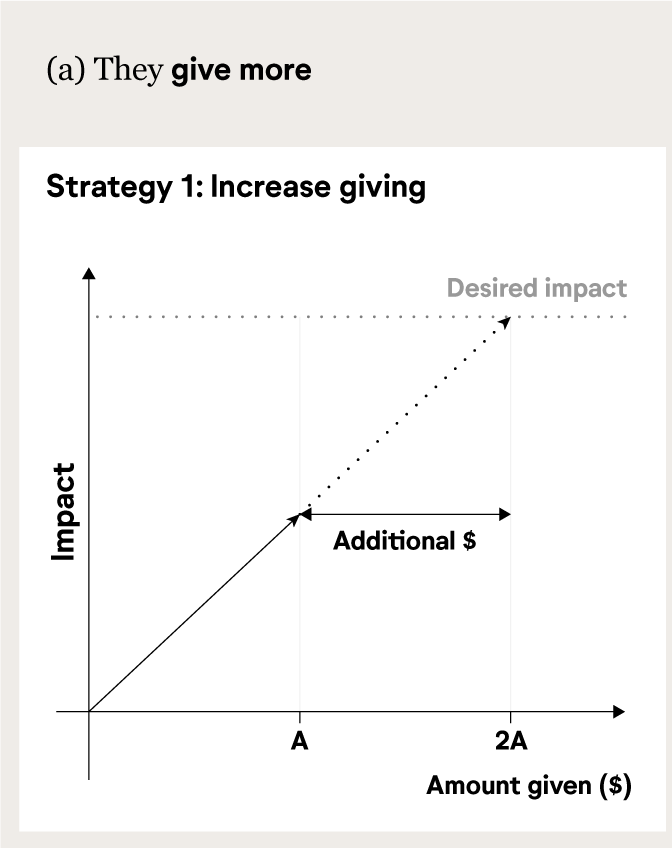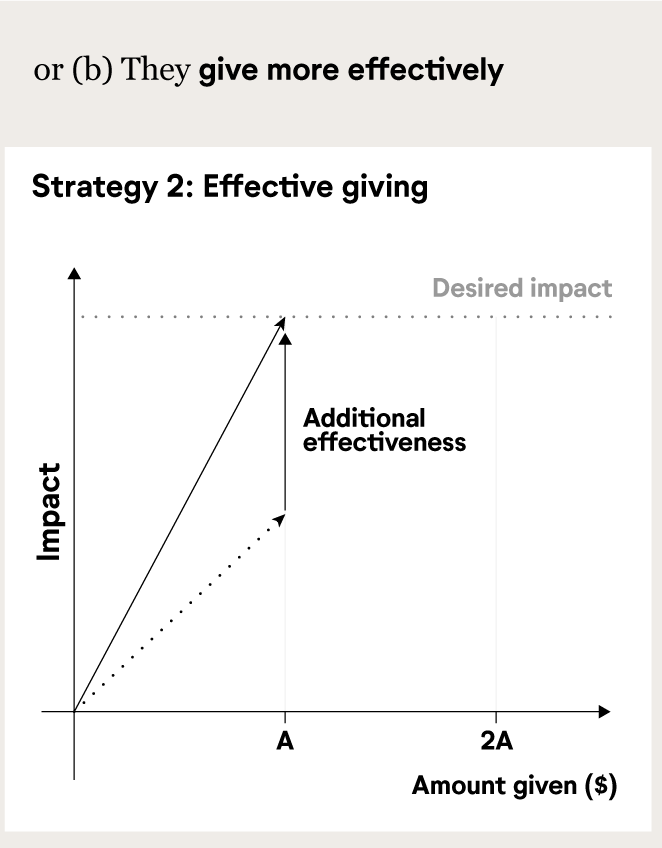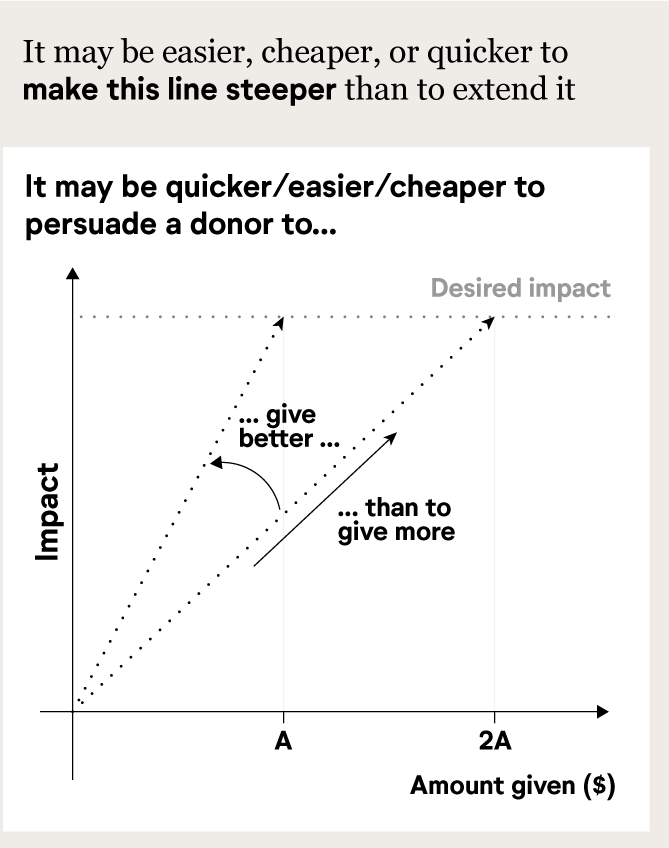Research
You want to know your donations are actually reaching people in need, which is why we do the work to make it easy for you to identify where your gifts will be most impactful. We look at the data to determine the best interventions across the many dimensions of poverty. Then we identify the highest-impact charities delivering those interventions, ensuring that we are helping the most in need, in the best known ways possible. With our research-backed recommendations and ongoing evaluation, you have best-in-class giving advice readily accessible to support you on your impact journey.
How We Define Poverty
“Measuring poverty with a single income or expenditure measure is an imperfect way to understand the deprivations of the poor since, for example, markets for basic needs and public goods may not exist. Complementing monetary with non-monetary information provides a more complete picture of poverty” – United Nations, 2015
The World Bank defines extreme poverty as living on $2.15 per person per day or less, however economic deprivation alone is only one of the many aspects affecting the life of a person experiencing poverty. The concept of multidimensional poverty has gained traction in the field of international development. The term is based on the understanding that various dimensions of human life, such as access to healthcare, education, empowerment, and working conditions, affect a person’s overall well-being and should therefore be considered when assessing and measuring poverty. For example, if a diet that provides all of your essential nutrients costs an average of $3.54 a day, and yet the average person experiencing extreme poverty lives off approximately $2.15 a day, we see that it is impossible for those impacted by poverty to pay for food that will promote and sustain healthy living. The experiences of economic deprivation and malnutrition are interlinked.
The Multidimensional Poverty Index, or MPI, is an international measure of acute multidimensional poverty and recognizes the interconnectedness of the different dimensions of poverty. It was developed by the Oxford Poverty and Human Development Initiative (OPHI) in collaboration with United Nations Development Programme (UNDP) and is based on Amartya Sen’s capability approach. The MPI complements traditional monetary poverty measures through an index that captures the acute deprivations in three dimensions:
- Health
- Education
- Living standards
The MPI breaks down the three dimensions of poverty into ten indicators, which are weighted. A person is identified as being multidimensionally poor if they are deprived in a third of the weighted indicators. The intensity of poverty is then measured by the percentage of deprivations the individual or community are simultaneously experiencing. The table below shows the indicators and their weights.
Global MPI – Dimensions, Indicators, Deprivation Cutoffs, and Weights
Source: Alkire, S., Kanagaratnam, U. and Suppa, N. (2020). ‘The global Multidimensional Poverty Index (MPI): 2020 revision’, OPHI MPI Methodological Note 49, Oxford Poverty and Human Development Initiative, University of Oxford.
| Dimension | Indicator | Deprived if living in a household where… | Weight |
|---|---|---|---|
| Health (1/3) | Nutrition | Any person under 70 years of age for whom there is nutritional information is undernourished. | 1/6 |
| Child mortality | A child under 18 has died in the household in the five-year period preceding the survey. | 1/6 | |
| Education (1/3) | Years of schooling | No eligible household member has completed six years of schooling. | 1/6 |
| School attendance | Any school-aged child is not attending school up to the age at which he/she would complete class 8. | 1/6 | |
| Living Standards (1/3) | Cooking fuel | A household cooks using solid fuel, such as dung, agricultural crop, shrubs, wood, charcoal, or coal. | 1/18 |
| Sanitation | The household has unimproved or no sanitation facility or it is improved but shared with other households. | 1/18 | |
| Drinking water | The household’s source of drinking water is not safe or safe drinking water is a 30-minute or longer walk from home, roundtrip. | 1/18 | |
| Electricity | The household has no electricity. | 1/18 | |
| Housing | The household has inadequate housing materials in any of the three components: floor, roof, or walls. | 1/18 | |
| Assets | The household does not own more than one of these assets: radio, TV, telephone, computer, animal cart, bicycle, motorbike, or refrigerator, and does not own a car or truck. | 1/18 |
The Oxford Poverty and Human Development Initiative also identifies a number of missing dimensions of poverty that still need to be integrated into the MPI in the future. These include: Quality of work, Empowerment, Physical safety, Social connectedness, Psychological well-being. Using more nuanced measures of poverty can lead to better responses, interventions, and higher impact.
Read more on How We Define Poverty and How We Identify the Most in Need directly in our Evaluation Framework.
How We Evaluate Interventions
Interventions are the actions, programs, or initiatives that are implemented to address and solve the multiple dimensions of poverty and improve well-being. We identify the most impactful solutions to key drivers of poverty by reviewing:
- Evidence: Is the intervention backed by rigorous evidence?
- Scale: Does the intervention have the potential to reach a high number of beneficiaries? This will depend both on its complexity and the cost-per-beneficiary.
- Depth of impact: How many indicators of multidimensional poverty does the intervention address?
- Durability: Is the change achieved by the intervention sustained over time?
Read more on How We Find the Most Impactful Interventions directly in our Evaluation Framework.
How We Evaluate Charities
We evaluate organizations based on their:
- Quality of evidence that supports their interventions
- Program reports, including monitoring and evaluation data
- Track record in delivering impact
- Cost-per-beneficiary to ensure the intervention is cost-effective and scalable
- Transparency and commitment to learning and improvement
- Understanding of the communities they serve and how they strengthen local systems
- Commitment to respecting their beneficiaries’ dignity and priorities in program design and implementation
In our review, we consider opportunities when and where philanthropic investments can help organizations grow. This includes when they can expand to reach a larger scale and preparing them for more significant funding by multilateral agencies. We appreciate that all assessments inherently involve a degree of uncertainty and necessitate professional judgment from our team.
Read more on How We Find the Most Impactful Charities directly in our Evaluation Framework.
How We Measure Impact
We measure the impact of organizations based on the:
- Dimensions of poverty they aim to address
- Specific outcomes they are seeking to achieve
- Depth of an intervention, or the degree to which it addresses multiple indicators or dimensions of poverty
- Durability of the intervention, or the degree to which the change achieved can be sustained over time through government involvement, markets and/or social systems adoption
We measure the impact of our own organization based on:
- How much money we move to high-impact charities
- How donations to our recommended charities contribute to their success
- Our leverage ratio, which is the ratio of our own operations costs and the amount donated to our recommended charities. Currently, our work results in an average of $15 additional dollars given to our recommended charities.
Read more on How We Measure Impact directly in our Evaluation Framework.
We do the research to make sure your donation has the highest impact
To put this graphically, a donor wanting to achieve more impact has two options:



Source: Effective Philanthropy
Our Process in Action: Teaching at the Right Level Africa
If we use ‘education’ as a dimension of extreme poverty, how would we conduct an assessment of a charity and make recommendations? Let’s say a colleague from our network suggest we look into Teaching at the Right Level Africa. The organization works to promote teaching students at their actual learning levels in over 12 countries across Africa.
Step 1: Evaluating the problem
- Does the charity work on key dimensions of poverty?
Yes, Teaching at the Right Level Africa focuses exclusively on education. - Do they work in priority geographies?
Yes, Teaching at the Right Level Africa focuses on improving educational outcomes in sub-Saharan Africa. - Do they work on key drivers of deprivation in those geographies?
Yes, Teaching at the Right Level Africa focuses on improving basic skills in sub-Saharan Africa, where over 80% of children complete primary school without being able to read and understand a basic paragraph.
Step 2: Evaluating the solution
- Does the charity implement an evidence-based intervention?
Yes, adjusting instruction to students’ level has been identified by multiple evidence-based reviews as one of the most impactful interventions to improve students learning outcomes. - Does the solution have an impact across multiple dimensions of poverty?
Yes, based on the available evidence, our team estimates that improved learning outcomes leads to positive impact on future income and health. - Does the solution have the potential to have an impact at scale?
Yes, previous implementations of the solution show that it can be implemented cost-effectively at scale. - Does the solution lead to durable impact?
Yes, based on the available evidence, our team estimates that each additional year of improved learning can lead to a 10% increase in future income, with positive indirect effects on households.
Step 3: Evaluating the organization
- Does the charity have a strong track record of impact?
Yes, the Teaching at the Right Level Africa team was a joint venture between Pratham and J-PAL. Pratham is one of the leading educational nonprofits in India, with a strong track record of impact. J-PAL is a renowned research center with experience in poverty alleviation across the globe. - Does the charity respect beneficiaries’ dignity, priorities and needs?
Yes, the Teaching at the Right Level Africa team is local and shows high respect for the beneficiaries priorities. They collaborate closely with local implementing partners and adapt their programming to different contexts and local needs. - Does the charity have the potential to drive systems change?
Yes, Teaching at the Right Level Africa collaborates and assists governments in sub-Saharan Africa to test and implement their own educational program. They do this through evidence-generation and technical assistance to government officials.
After completing this assessment, Teaching at the Right Level Africa was added to our list of recommended charities and fund beneficiaries.
